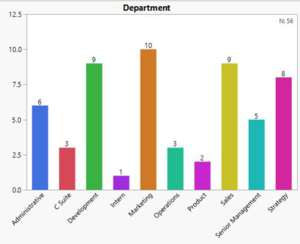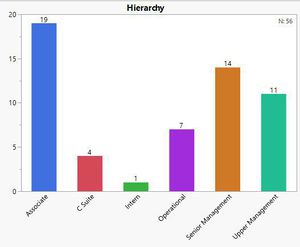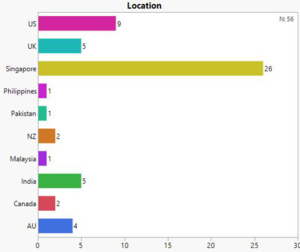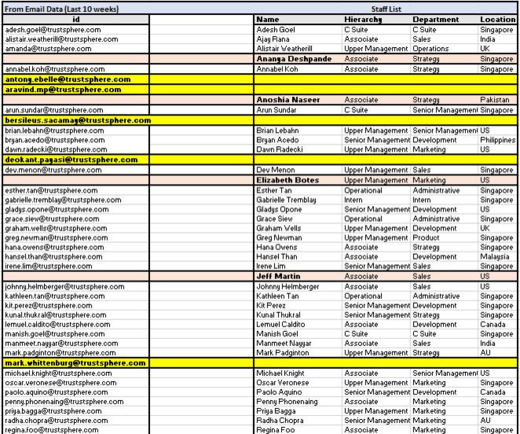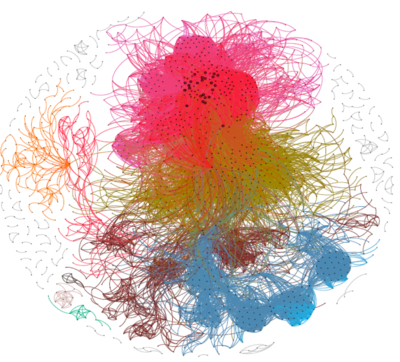Difference between revisions of "APA Final Progress"
(Added Survey information) |
|||
| Line 30: | Line 30: | ||
{|style="width:100%;vertical-align:top;margin-top:20px;" | {|style="width:100%;vertical-align:top;margin-top:20px;" | ||
|- | |- | ||
| − | |style="vertical-align:top;width:30%;" | <div style="background: #10d0e5; padding: 13px; font-weight: bold; text-align:center; line-height: wrap_content; text-indent: 20px;font-size:20px; font-family:helvetica"> <font color= #ffffff> | + | |style="vertical-align:top;width:30%;" | <div style="background: #10d0e5; padding: 13px; font-weight: bold; text-align:center; line-height: wrap_content; text-indent: 20px;font-size:20px; font-family:helvetica"> <font color= #ffffff>Stage 2: Explore and Clean Data</font></div><br/> |
<p> | <p> | ||
| Line 178: | Line 178: | ||
<br> | <br> | ||
| − | < | + | {|style="width:100%;vertical-align:top;margin-top:20px;" |
| − | + | |- | |
| − | + | |style="vertical-align:top;width:30%;" | <div style="background: #10d0e5; padding: 13px; font-weight: bold; text-align:center; line-height: wrap_content; text-indent: 20px;font-size:20px; font-family:helvetica"> <font color= #ffffff>Stage 3: Feature Engineering + Survey </font></div><br/> | |
| + | |||
| − | [[ | + | <center> |
| + | Click on [[APA_Feature Engineering|<font face ="Century Gothic" color="#00C5CD"><strong><i> FEATURE ENGINEERING</i></strong></font>]] for more details. | ||
| + | </center> | ||
<br> | <br> | ||
| + | '''Mode of data collection:''' Online survey <br> | ||
| + | '''Target Sample:''' All employees in the company (across geographies)<br> | ||
| + | '''Aim:''' To use the survey to validate if an email exchange network is a good tool to calculate influence score. We define Influence Score as the extent to which an individual sways information flow in the workplace. <br> | ||
| + | '''Summary:''' The purpose of the survey is to validate the use email exchange network for calculating influence score, where, influence score is defined as the extent to which an individual sways information in the workplace. <br> | ||
| + | In a work environment, as there as be different kinds of information flow, we divided the term influence in to six main categories – | ||
| + | *'''Social:''' defined as any interaction regarding the business with any colleague. This gives a high level view of the kind of interactions and volumes of interactions between employees. | ||
| + | ** <i>How many times do you interact with the following colleagues regarding business topics, within a month?</i> | ||
| + | *'''Information sharing:''' defined as an interaction when job related resources or information is transferred between employees. | ||
| + | ** <i>How many times do you receive job related information from the following colleagues within a month?</i> | ||
| + | * '''Problem solving:''' defined as an interaction where employees seek help in solving problems. These interactions will be dependent on the kind of work-related problems an employee regularly faces. | ||
| + | ** <i>How many times do you seek help from the following colleagues for business/technical related problems within a week?</i> | ||
| + | * '''Decision making:''' defined as an interaction between two employees where one employee consults the other on a specific business related decision to make. | ||
| + | ** <i>How many times do you consult the following colleagues if you have a work related decision to make, within a week?</i> | ||
| + | * '''Support:''' defined as an interaction wherein an employee provides career advice to another employee. | ||
| + | ** <i>How many times do you discuss your career prospects and progression with the following colleagues in a year?</i> | ||
| + | * '''Idea generation:''' defined as an interaction between two employees that involves the discussion of novel ideas or approaches. | ||
| + | ** <i>How many times do you discuss, share or brainstorm novel ideas with the following colleagues, in a quarter?</i> | ||
| + | |||
| + | <br> | ||
| + | <big>'''You may view the'''</big> | ||
| + | [https://smusg.asia.qualtrics.com/jfe/form/SV_6eVxySZKg8NAW2N <font face ="Century Gothic" color="#00C5CD"><strong><i><big>survey here.</big></i></strong></font>] | ||
<p> | <p> | ||
Revision as of 18:32, 26 February 2017
Stage 2: Explore and Clean Data
Email Data
Additionally, we also found several system email addresses that can potentially skew the data (due to mass emails). Hence, we decided to eliminate emails to and from these email addresses as well. Below, we have listed some of the email addresses and the number of times they occurred in the data set.
Further, we removed columns that we do not need in our analysis. These include:
Email Data
Network Exploration Conclusions No weights for edges – purely based on quantity Many Senior Management and Upper Management Employees seem to have a low centrality score Possibly a biased solution Need for feature engineering to add weight that removes the bias
|

